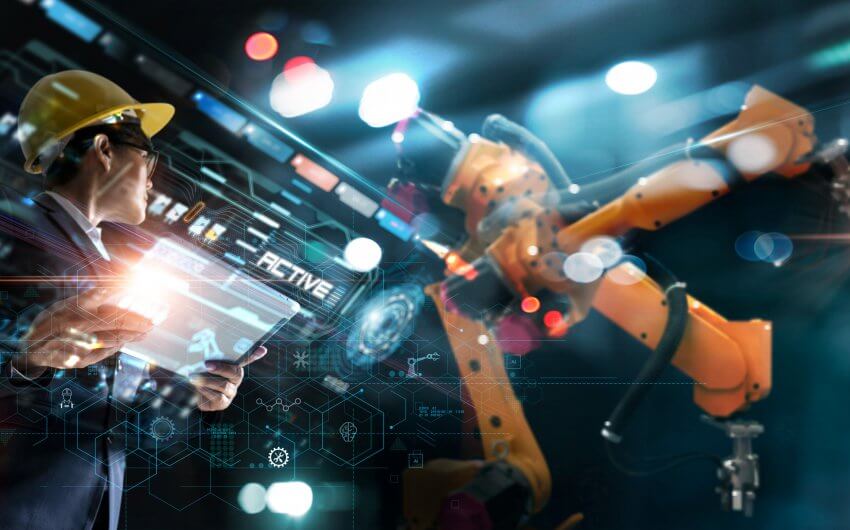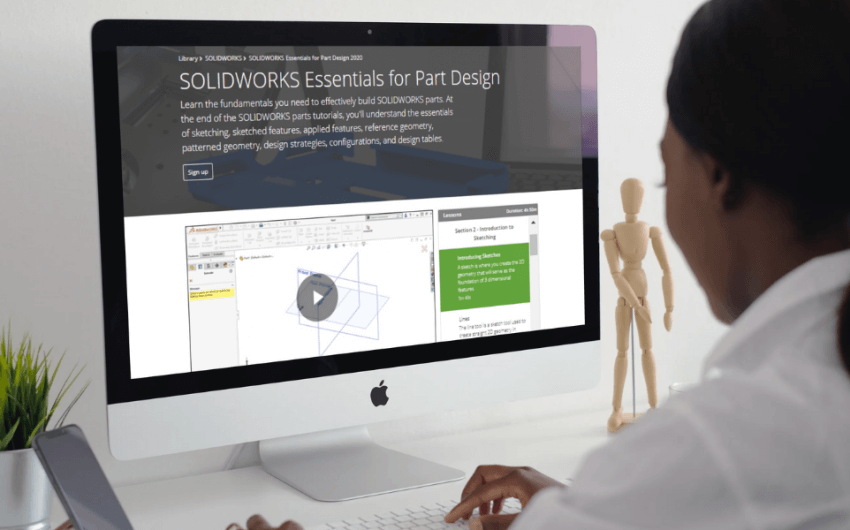Building a future-proof facility and workforce starts now.
Industrial equipment and machinery likely isn’t the first industry you think of when it comes to innovation. However, industrial manufacturing is facing significant innovative opportunities and a major shift from how the industry has traditionally operated. In the thick of Industry 4.0, there are multiple trends to prepare for if organizations want to maintain (or gain) a competitive edge. Here are the key trends that will affect production and engineering teams in industrial manufacturing:
- The Industrial Internet of Things (IIoT)
- Predictive maintenance and analytics
- AI and generative design
- 3D printing and additive manufacturing
- Finding and training skilled workers
IIoT brings the Internet of Things to the manufacturing world, enhancing industrial equipment, machinery, and processes with “smart” technology and real-time analytics to improve efficiency. IIoT has gotten off to a strong start in recent years, and experts predict that the market will overcome any remaining adoption barriers and grow to $200B by 2021. These barriers include integration challenges and lack of technical expertise.

In conjunction with real-time analytics through IIoT, predictive analytics will have a significant effect on industrial operations, specifically in the form of predictive maintenance. Adopting a predictive maintenance solution can help manufacturing teams discover potential machine problems before they happen, which McKinsey & Company estimates could reduce maintenance costs by 20% and unplanned outages by 50%. Since getting to market faster and minimizing downtime are common concerns among most engineering and production teams, predictive maintenance is poised to be a serious game-changer.
→ Learn more: Download a free white paper on Industry 4.0 and the future of engineering and manufacturing.
The market for artificial intelligence in industrial manufacturing is growing rapidly at a CAGR of 49.5%. AI will impact the industry in several ways, from robotics and automation to machine learning handling big data. However, the biggest innovation in AI that impacts engineers in industrial manufacturing is generative design. Generative design allows designers and engineers to input parameters, constraints, and more into software that then generates all the possible design alternatives. This technology has the possibility to save engineers a lot of time in the manufacturing process. Says Brian Matthews, a VP at Autodesk, “You can do 50,000 days of engineering in one day.”
→ Get a closer look: See how generative design and other cutting-edge design methods are used in the real world with the Inside the Design video series.
Additive manufacturing takes the cost-effective techniques of 3D printing and uses it for industrial applications. Keeping consistent with many of the other major innovations in manufacturing, 3D printing boosts efficiency and reduces costs. Designing and producing molds, tools, and dies for heavy equipment and machinery manufacturing can now be done inexpensively and on-site in a matter of days — a process that historically was very costly and took months. Since major sectors within industrial manufacturing are already implementing these techniques, learning how to design for additive manufacturing is a key skill for both current and future engineering design teams.
→ Keep reading about additive manufacturing:
The biggest challenge at the heart of all these exciting trends and innovations is the growing industrial manufacturing skills gap and labor shortage. Industrial machinery and equipment teams across the U.S. are struggling to find skilled workers to fill engineering and production roles, and this gap is expected to leave millions of jobs unfilled over the next decade. If manufacturing organizations want to keep up with innovative trends like IIoT and AI, they should be taking steps now to train their future-proof workforce and close the skills gap.

























